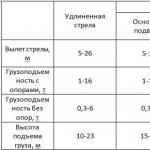Vaccination is the creation of sustainable immunity against infection. However, it is possible to vaccinate a patient with herpes zoster only if the period without exacerbations is at least two months. Therefore, if a person has fairly frequent exacerbations, then with the help of immunomodulatory drugs it is necessary to bring the patient's state of health to such a level that the remission period is at least two months.
However, it should be noted that all patients suffering from herpes virus infection are prescribed blood donation to determine the immune status. Subsequently, in accordance with the changes that are in the immune system of a given person, on the basis of individual changes, immunocorrective therapy is selected, which is included in all complex methods for the treatment of herpes virus infection.
Vitamin therapy and diet
 Also, with shingles, to strengthen the immune system, it is recommended to take the following vitamins:
Also, with shingles, to strengthen the immune system, it is recommended to take the following vitamins:
- Vitamin A;
- Vitamin E;
- Vitamin C.
- B group vitamins.
It should also be borne in mind that during treatment, a sparing diet rich in nutrients, vitamins and trace elements is recommended for a patient with herpes zoster. Food is recommended to boil or steam, and you should also reduce the intake of salty, fatty and fried foods.
- dairy ( milk, kefir, butter, cottage cheese);
- vegetables ( beets, broccoli, carrots, eggplant, zucchini, pumpkin, tomatoes, peppers, onions);
- white meat;
- seafood ( salmon, pike perch, herring);
- nuts ( peanuts, pistachios, almonds, walnuts, cashews);
- fruits ( grapes, apricots, apples, kiwi, plums, citrus fruits);
- cereals ( oatmeal, wheat, barley groats);
- legumes ( peas, beans);
- green tea, rosehip or raspberry tea.
Prevention of herpes zoster
 There are the following measures to prevent herpes zoster:
There are the following measures to prevent herpes zoster:
- vaccination;
- boosting immunity.
Vaccination
The Varicella-zoster virus vaccine was approved in 2006 after a successful trial involving about forty thousand people aged sixty and over. The results of the study showed that the introduction of the vaccine reduced the incidence of herpes zoster by 51%.The purpose of this vaccine is to provide artificial active immunity against the Varicella-zoster virus. This vaccine contains live cultures, but with reduced virulence ( the ability of a microorganism to infect).
Currently, there is so far the only preventive vaccine against herpes zoster - the Zostavax vaccine. This vaccine is administered once, intradermally. The duration of action of the prophylactic drug, on average, is from three to five years.
This vaccine is indicated:
- for the prevention of relapse in people already suffering from herpes zoster;
- adults who have not had chickenpox;
- people suffering from postherpetic neuralgia.
- the presence of allergic reactions to the components of the vaccine;
- with colds ( if the body temperature is 37.5 degrees and above);
- the presence of HIV infection or AIDS;
- during pregnancy.
Symptoms of an allergic reaction after a vaccine is given include:
- weakness;
- pallor of the skin;
- dizziness;
- swelling of the throat;
- heartbeat;
- labored breathing;
- wheezing.
- people who have contact with a patient with herpes zoster;
- people with reduced immunity;
- newborn if the mother had chickenpox during pregnancy.
Immunity Boost
Since it is known that the main cause of the development of herpes zoster is a decrease in immunity, the methods of preventing this disease are aimed directly at strengthening the body's defenses.To improve immunity, the following recommendations should be followed:
- daily walks in the fresh air;
- hardening of the body;
- moderate daily physical activity;
- rejection of bad habits ( alcohol, smoking);
- nutrition should be balanced proportionate intake of fats, proteins and carbohydrates);
- periodic visits to the sauna or bath;
- avoidance of stress.
Answers to frequently asked questions
Can you get herpes zoster again?
 The varicella-zoster virus, when it enters the human body, causes chickenpox ( chicken pox). However, after recovery, this virus is not eliminated, but remains in the human body in a latent state. This virus asymptomatically lurks in nerve cells in the dorsal roots of the spinal cord. Activation of the virus occurs when the body is exposed to negative factors that reduce immunity. In this case, the disease recurs, only not in the form of chicken pox, but in the form of shingles. As a rule, the recurrence of shingles is not observed in the future. In patients with normal health, recurrence of herpes zoster is observed in two percent of cases.
The varicella-zoster virus, when it enters the human body, causes chickenpox ( chicken pox). However, after recovery, this virus is not eliminated, but remains in the human body in a latent state. This virus asymptomatically lurks in nerve cells in the dorsal roots of the spinal cord. Activation of the virus occurs when the body is exposed to negative factors that reduce immunity. In this case, the disease recurs, only not in the form of chicken pox, but in the form of shingles. As a rule, the recurrence of shingles is not observed in the future. In patients with normal health, recurrence of herpes zoster is observed in two percent of cases. In ten percent of people, a recurrence of herpes zoster is observed in the presence of the following pathologies:
- HIV infection;
- AIDS;
- oncological diseases;
- diabetes;
The purpose of the introduction of the vaccine is to create artificial active immunity against the Varicella-zoster virus.
Is herpes zoster contagious?
If a contact person had chickenpox in childhood, and he developed strong immunity, then the risk of contracting herpes zoster is practically minimized. However, in people who have not previously had chickenpox, contact with a person who has shingles can lead to the development of chickenpox. Especially this risk increases in children and in adults after fifty years with low immunity.It should be noted that herpes zoster is contagious during herpetic eruptions. During the healing period and the formation of crusts, this disease ceases to be dangerous.
Herpes zoster is an infectious disease that has a common pathogen with chickenpox - Herpes zoster. Herpes zoster is more common among the adult population and is characterized by the appearance of a painful blistering rash along the nerve fibers. It often looks like a streak of rash girdles the person's torso - hence the name of this infection.
Incubation period
The incubation period is the period of time from the moment of infection with a viral agent until the onset of clinical manifestations. Often this period has a clear time frame for each specific disease. The incubation period of herpes zoster can last as long as you like - months and years. The development of the disease itself is not associated with any virulent properties of the infectious agent. It is under the influence of certain external factors that reduce the control of the immune system over the virus. In other words, the disease will manifest itself only when the immune system is weakened, and herpes is activated in the nerve ganglia.
At the first contact with herpesvirus type 3, an uninfected person develops chickenpox. But after recovery, there is no complete elimination (removal) of the pathogen from the body. Herpes permanently settles in the nerve ganglia of the spinal cord and cranial nerves. And how long he stays there depends on how reliable the body's defenses are.
It is believed that the transferred chickenpox leaves lifelong immunity. Indeed, repeated cases of chickenpox are extremely rare. When the virus reactivates in the body, herpes zoster usually occurs.
The main reasons for the weakening of the protective forces of the human body are as follows:
- Prolonged excessive physical and psycho-emotional overstrain.
- Lack of protein and vitamins in the diet.
- Decreased immune defenses in old age.
- Artificial suppression of immunity when taking cytostatics and radiation therapy.
- Congenital and acquired immunodeficiency states.
This herpes infection can be ill several times during a lifetime, but it may also happen that the incubation period of shingles never ends, and the disease does not manifest itself.
Disease duration
How long the disease will last depends on the general condition of the patient with herpes zoster, as well as on how responsibly he treats treatment. In the clinical picture of the disease, the following stages are distinguished:
- prodromal period. It is characterized by general malaise, headache, slight fever. There is also pain, burning and itching in the area of future rashes. This period lasts 2-4 days.
- Actually rashes. During this period, patients usually receive a course of treatment. The disease is treated for as long as the herpetic vesicles are poured. The average duration is 5-7 days.
- The period of formation of crusts. Lasts about 10 days. The crusts pass, leaving behind pigmentation.
In total, the duration of the disease is from 2 to 4 weeks. A patient is considered contagious before the formation of the first crusts. This should be taken into account when planning quarantine measures.
Patients with shingles are dangerous in terms of infection for children and adults who have not had chickenpox. For those who have been ill, such patients do not pose any danger. 
Preventive actions
For people who have had chicken pox, the prevention of herpes zoster mainly includes measures to strengthen the body's defenses, namely:
- a complete fortified diet;
- exclusion of hypothermia;
- sufficient physical activity;
- complete rest;
- fight stress.
Those who have been spared by chickenpox should take measures to protect themselves from infection. Individuals with weakened immune systems should think about specific prevention - vaccination. If the disease occurs in a vaccinated person, it is treated quickly, easily and does not give complications.
Features of herpes infection
Herpesvirus, once in the body, remains in it forever. In the most unfavorable periods for human health, it certainly makes itself felt. And if it is impossible to get rid of it, then everyone can learn how to prevent and successfully treat the infections it causes.
Shingles (shingles)- a disease that occurs in humans as a result of activation of the varicella-zoster virus (herpesvirus type 3), which affects the posterior roots of the spinal cord and intervertebral ganglia (aggregations of nerve cells, nerve nodes), and also leads to the appearance of skin rashes at the level of the lesion.
Herpes zoster on the body manifests itself when the immune system is weakened, especially people over 60 years of age suffer from it.
Shingles is more difficult to tolerate than herpes on the lips or face, as it affects not only the skin, but the nerve endings. A person's temperature rises, there is severe pain in the places of future rashes.
How is shingles transmitted, is it contagious to other people or not?
More often than others, shingles affects people who have previously had chicken pox, the disease manifests itself when the immune system is weakened, usually at the age of 60-80 years.
Shingles is contagious, but for people who have had chickenpox, there is no danger of infection. When children who have not had chickenpox come into contact with patients with herpes zoster, children develop typical chickenpox. And children with chickenpox can cause herpes zoster in adults.
How can you get herpes?
Infection with herpes zoster occurs by airborne droplets and contact. Through the mucous membranes, the virus enters the bloodstream, from where it enters the skin, then penetrates into the endings of sensitive nerve fibers.
A person with normal immunity recovers in 2-4 weeks. In elderly and debilitated patients, herpes zoster can drag on for months, or even years, and proceeds in a more severe form.
Causes of shingles in humans
The main reason for the activation of the varicella-zoster virus dormant in the human body is the weakening of the immune system.
The group with an increased risk of contracting herpes zoster includes:
1. People who have reduced immunity as a result of advanced age. The risk of getting herpes is higher in older people.
2. Patients who have reduced immunity as a result of taking certain drugs (hormones, immunosuppressants).
3. Patients with reduced immunity as a result of chronic stress and overwork.
4. People with cancer who have undergone radiation therapy.
6. People with HIV infection and AIDS.
Forms of shingles (herpes)
There are the following forms of the disease shingles in humans:
1) gangliocutaneous (skin is affected);
2) ear and eye;
3) gangrenous (necrotic);
4) herpes zoster with damage to the autonomic ganglia;
5) meningoencephalitic;
6) disseminated.
Consequences and complications of shingles
1) When the motor branches of the nerves are affected, people may experience paralysis, movement disorders, and sensitivity disorders. On the part of the internal organs, there may be complications in the form of pneumonia, hepatitis, damage to the duodenum, bladder, etc.
2) The consequence of herpes zoster in the ear form of herpes zoster can be inflammation of the auditory nerve, paralysis of the facial nerve, as a result of which the face is skewed to one side.
A complication of herpes zoster in the ocular form can be damage to the eye, up to glaucoma.
3) A complication of herpes zoster in the ganglionic form can be suppuration in the area of rashes and blood poisoning.
4) The most common consequence (in 40% of patients) is that even after recovery, pain can persist for several months or years. These pains are called "postherpetic neuralgia." In 55% of patients with postherpetic neuralgia, the pain lasts a month, in 24% - three months, in the rest - six months or more.

Symptoms and signs of herpes zoster
Each form of herpes zoster has its own symptoms. Common symptoms for all types of herpes zoster are fever, weakness, pain in the places of future rashes, rashes on the body. The pain can be either constant aching or stabbing, jerking and paroxysmal.
Symptoms of herpes zoster in the ganglionic form of herpes:
1. Temperature rise
3. Severe pain at the site of the planned rash, there is also numbness, itching, tingling.
4. After 3-12 days, a characteristic rash appears on the body. The location of pain and rash is similar to the affected nerves (usually intercostal) and has a girdle character.
First, redness, swelling appears on the skin, then bubbles with transparent contents, then the contents become cloudy. The bubbles dry up and become crusty. These bubbles seem to crawl along the body, encircling the body on one side. Sometimes there are no bubbles. Then it is very difficult to diagnose shingles. Even doctors can confuse it with a heart attack or cholecystitis, based on the patient's pain.
Symptoms and signs of herpes zoster in the eye and ear variety:
1. Temperature rise
2. Signs of general intoxication: weakness, headache, nausea
3. Rashes on the body: in the ocular form, the trigeminal node is affected and the rashes are located along the branches of the trigeminal nerve (on the mucous membranes of the eye, nose, on the skin of the face, on the tip of the nose). With the ear form, the crankshaft is involved in the process, and rashes appear on the auricle and around it, and may also be in the external auditory canal. Can develop facial paralysis, trigeminal neuralgia.
Symptoms of shingles with gangrenous form:
The gangrenous form of herpes zoster develops in individuals with very weak immunity. There is a deep lesion of the human skin with the subsequent formation of scars.
Symptoms of herpes in meningoencephalitic form:
The meningoencephalitic form is rare, with a mortality rate of over 60%. This form begins with gangliocutaneous manifestations, then symptoms of brain damage appear: movement disorders, hallucinations, loss of consciousness.
Treatment of shingles in humans
Herpes zoster should be treated more carefully than herpes simplex, as this form has more severe symptoms and consequences.
How and how should shingles be treated in humans?
Treatment of herpes zoster should be carried out under the guidance of a doctor. Most often in medical treatment, the following scheme is used:
1. Cauterize lesions on the body with brilliant green - so that there is no suppuration.
2. Take drugs to increase immunity.
3. Take antiviral drugs (acyclovir, zovirax, sfamciclovir.).
4. For severe pain, drink an anesthetic, you can use the ointment used in the treatment of joints: voltaren, quick-gel, fastum-gel - with dried bubbles
5. Take vitamins (C - to increase immunity, B - to treat damaged nerve cells) and minerals (especially zinc)

Folk remedies for shingles on the body.
In addition to medical treatment, alternative treatment for shingles on the body can be used to speed up recovery, but only after the blisters have dried. In the phase of the disease, when they appear on the skin, it is better to use ordinary brilliant green.
Compresses for shingles.
Brew 1 tablespoon of immortelle with 1 cup of boiling water, insist, wrapped for 1 hour. Moisten a napkin and apply to a sore spot 2 times a day for 10 minutes. You can simply wipe the rash of shingles with this infusion.
Herbal compresses are a simple but effective folk remedy for herpes zoster on the body.
Brew any of the bitter herbs: celandine, wormwood, tansy, elecampane, marigolds, immortelle (1 tablespoon per 200 g of boiling water). Moisten a napkin with infusion, squeeze out the excess. Salt with a pinch of salt and tie to a sore spot on the body, cover with a towel on top and warm. Keep 30 minutes. Also good results in the treatment gives a compress with a decoction of burdock leaves.
Alternative treatment of herpes zoster with elm bark.
In May, before flowering, cut two-year-old elm shoots. Remove the top bark from them. Then carefully remove the light green skin, cut it and dry it in the sun. Brew like tea and drink 1 cup 3 times a day.
How to treat shingles with burdock at home.
Pour 2 tablespoons of burdock leaves with 1 cup of boiling water, leave for 30 minutes. Moisten a napkin and make a compress on the body at night.
How to treat herpes zoster with onions.
You can quickly dry the blisters of shingles with a simple hot fried onion. Peel the onion, cut off the top, chop on a fork and hold over the fire until it starts to brown. Cool to 30-40 degrees and apply to sore spots. Cool down - cut off the used layer of onion and fry the onion again.
Alternative treatment of herpes zoster with mustard.
Shingles can be successfully and quickly treated with such a folk remedy as mustard. The areas of the body where shingles has appeared must first be smeared with butter, then with mustard and tied with a cloth.
How to treat shingles at home with pumpkin.
The pumpkin is rubbed on a grater, the gruel is applied to a tissue napkin and applied to the affected areas. Make such a compress for the whole night, every evening.
In the folk treatment of herpes zoster, pumpkin seed oil - tykveol is also used: for treatment, lubricate the rash 4 times a day.
How to treat shingles in a person at home quickly.
Consider the best homemade recipes and reviews from the newspaper "Vestnik healthy lifestyle", which helped to effectively and quickly get rid of the disease.
How to treat shingles with cinquefoil.
Grind fresh leaves of cinquefoil and make a compress from this gruel on areas of the body affected by herpes. Recipe from the newspaper "Bulletin of healthy lifestyle" 2000, No. 19, art. 16.
Calendula and meadowsweet in the treatment of herpes folk remedies.
Recommend such a popular recipe for herpes: 2 tablespoons of dried calendula flowers and 2 tablespoons of meadowsweet flowers pour 500 grams of vodka. Insist 2 weeks. For herpes zoster, apply a cloth soaked in tincture to the rashes on the body for 15 minutes 3 times a day, take the tincture and inside - 1 tablespoon per 100 g of water 3 times a day.
Recipe from the newspaper "Bulletin of Healthy Lifestyle" 2008, No. 8, p. 19, 2001, No. 24, Art. 14
Folk remedies for the treatment of shingles.
1. Wipe the affected areas on the body with tincture of green walnuts 3 times a day.
2. Lubricate the affected area with 20% propolis on lanolin. This ointment can be improved by adding 10% cedar resin and 10% wax to it.
3. Take half a tablet of aspirin three times a day.
Use all three points in combination. Improvement occurs within two days, and a complete cure after a week.
Recipe from the newspaper "Bulletin of healthy lifestyle" 2003, No. 3, p. 15, No. 8, p. 15.
Home treatment for shingles with honey, ash and garlic.
Mix 100 grams of honey with 1 tablespoon of ash and three cloves of minced garlic. Lubricate the affected areas of the body.
Folk remedy for the treatment of herpes from the newspaper "Bulletin of healthy lifestyle" 2004, No. 5, Art. 14.
Alternative treatment of herpes zoster mint.
Pour 1 tablespoon of mint with a glass of boiling water and boil in a water bath for 20 minutes. Lubricate with this decoction the places affected by herpes on the body.
Recipe from the newspaper "Bulletin of healthy lifestyle" 2004, No. 5, p. 14.
Grass bruise from herpes.
Squeeze the bruise juice from the grass and lubricate the affected areas with it. It will pinch, but you have to be patient. Not started cases pass for 1 time. Otherwise, it will take several days to be treated.
Folk method from the newspaper "Bulletin of healthy lifestyle" 2004, No. 7, art. 7
Aloe herpes treatment.
Aloe helped with shingles. Cut wide leaves in half lengthwise and attach to sore spots overnight. Do this every evening. Shingles will disappear soon
Folk method from the newspaper "Bulletin of healthy lifestyle" 2005, No. 20, p. thirty
Alternative treatment of herpes zoster with tar.
Lubricate with a brush or feather the affected areas are deprived of space on the body and do not tie. Do this procedure 1 time per day.
Folk recipe from the newspaper "Bulletin of healthy lifestyle" 2006, No. 3, p. eleven.
ASD-2 fraction in the treatment of herpes zoster.
Moisten the affected area with a cotton swab soaked in Dorogov's preparation (ASD-2). Moisten 1 time per day for 4-5 days in a row. Even very severe forms of herpes are cured.
Advice from the newspaper "Bulletin of healthy lifestyle" 2006, No. 17, art. 15.
Vodka and egg
Boil a hard-boiled chicken egg, peel, put in a glass. Pour vodka to the top, insist in a warm place for a day. Then drink 20 ml of vodka and eat an egg. Do this 3-4 times. This remedy helps to cure herpes zoster on the body
Home recipe from the newspaper "Bulletin of healthy lifestyle" 2005, p. 27-28, No. 8
Hydrogen peroxide is a popular folk remedy for herpes.
Lubricate the affected areas with a cotton swab moistened with hydrogen peroxide twice a day. In three days the herpes completely disappeared.
Home method from the newspaper "Bulletin of Healthy Lifestyle" 2007, No. 3, p. 8
Salt and soda.
1 st. l. salt and 1 tbsp. l. soda mix and dilute with water until the density of sour cream. Lubricate sore spots with this ointment. Do three times a day. On the third day, the disease begins to pass.
The recipe of traditional medicine from the newspaper "Bulletin of healthy lifestyle" 2009, No. 3, p. 32
How to treat herpes zoster on the body with folk remedies - reviews of the cured.
Feedback on the treatment of herpes at home in adults: honey cakes, clay and vacuum massage.
For a long time, the woman could not cope with herpes zoster in the lumbar region with the help of medications and physiotherapy procedures prescribed by doctors. Then she decided to apply an integrated approach to treatment.
1. Every day I made clay compresses on the affected area of the body for 2 hours (it took 14 procedures, take a new clay each time, after the compress - a shower)
2. To increase immunity, I took echinacea tincture
3. After a course of clay compresses, according to the same principle, I made honey compresses - 10 procedures.
4. I used the Kuznetsov applicator when, after compresses, the skin returned to normal.
5. Carried out vacuum therapy with medical cups
Review from the newspaper "Bulletin of healthy lifestyle" 2005, No. 17, p. 8
A quick way to treat shingles in an adult.
The woman unsuccessfully tried to treat shingles in the clinic for several months. On the advice of a friend, she rubbed all the affected areas with garlic juice and went to work in the garden in a bathing suit, where she spent several hours under the sun. It was possible to cure herpes very quickly - after a few days the disease completely disappeared.
Review from the newspaper "Bulletin of healthy lifestyle" 2005, No. 20, p. thirty
Alternative treatment of herpes zoster in adults with tincture of pepper.
An elderly woman was tormented by herpes zoster for a long time, they treated her, smeared them, but there was little sense. Over time, she adapted to her illness. I began to make a tincture of red hot pepper (fill the bottle up to half with whole pods of hot pepper and top up with vodka, leave for 21 days). As soon as he feels pain, long before the rashes, he begins to rub the rashes with this tincture. The rash does not appear, the pain quickly fades.
Review from the newspaper "Bulletin of healthy lifestyle" 2011, No. 10, p. 32
Alternative treatment of herpes in adults with celandine. The woman suffered shingles, injections, ointments prescribed by doctors did not help. Severe pain and itching was removed by compresses from the urine. I wiped the blisters with celandine juice and celandine oil, and then smeared it with Yam ointment (sold in a veterinary clinic). The treatment took about two months.
Review from the newspaper "Bulletin of Healthy Lifestyle" 2010, No. 4, p. 33
Review. How to treat shingles on the body in adults.
The man was very cold and after 5-6 days he began to complain of a burning sensation of the skin, a day later papules the size of a pea appeared on his back. The doctor said it was shingles. They could not buy the prescribed medicines right away and used the folk remedies read in the newspaper. The patient's wife took a whole package of celandine, squeezed the juice out of it with a meat grinder, it turned out 400 ml, added 200 ml of moonshine. In this tincture, gauze was moistened and applied in the morning to rashes. Polyethylene on top and secured with a cloth. In the evening, we decided to repeat the procedure, and were very surprised that the papules were slightly dried up. In the morning, after a full-time compress, the burning sensation stopped. Damaged skin was smeared with sea buckthorn oil. A week later, all the symptoms of herpes zoster disappeared, only specks remained in place of the sores.
Review from the newspaper "Bulletin of Healthy Lifestyle" 2012, No. 15, p. 30
Shingles - home treatment with ashes.
The man had shingles. Tried many things, but nothing helped. Ash from birch logs from the oven helped. The ash was mixed with water to make a slurry, and sore spots were smeared with it. After three procedures, the disease began to pass.
Review from the newspaper "Bulletin of Healthy Lifestyle" 2013, No. 5, p. 30
Folk remedy for herpes - clay and honey cakes.
A woman has a rash of herpes zoster in the lumbar region. The pain was burning, cutting. Neither injections nor physical therapy helped. The patient decided to treat shingles with folk remedies. She diluted blue clay with water and applied it to the diseased area 2-3 cm thick. Then waxed paper, polyethylene and a warm scarf. She lay in bed with a clay compress for 2 hours, after which she cleaned everything and wiped the skin. Each time the clay took a new one. Has made 14 procedures. Simultaneously with it saw immunal. And then she applied honey cakes for 10 days: she mixed rye flour with honey, made compresses according to the same principle as clay ones.
Review from the newspaper "Bulletin of healthy lifestyle" 2013, No. 20, p. 40
How to get rid of shingles pain.
Rashes from herpes zoster quickly pass, and the pain remains for a long time. Meadowsweet (meadowsweet) root will help relieve pain with lichen. This plant is found everywhere.1 cup of dry chopped meadowsweet roots (bulbs) pour 500 ml of alcohol or good vodka. Insist 21 days. Take 30 ml 3 times a day before meals.
The woman was in pain for a long time. After taking this remedy, the pain and itching disappeared.
Review from the newspaper "Bulletin of healthy lifestyle" 2013, No. 21, p. 31.
The definition of symptoms and treatment of herpes zoster in adults should be handled by an infectious disease specialist, who should be contacted at the first sign of the disease. The disease proceeds with a pronounced pain syndrome, a rash and a violation of the general condition of the patient. If you ignore the symptoms and do not start treatment on time, the pathology often leads to severe complications - paresis, paralysis, meningoencephalitis. Therapy can be carried out both in a hospital and at home, it all depends on the severity of the course of a herpes infection and on the desire of the patient.
Herpes zoster (or shingles) is caused by the same type of virus (herpes zoster) that causes chickenpox. At the first hit of Herpes zoster in the human body, the usual chickenpox develops, which affects the main percentage of children. After the illness, the virus does not disappear anywhere, but remains forever in the body, hiding in the cells of the nervous system and waiting for favorable conditions for a new attack.
When provoking factors appear (decreased immunity, contact with a patient with chickenpox or herpes), the pathogen becomes activated, leaves the nerve cells and spreads along their processes, reaching the skin.
The area controlled by the affected nerve becomes covered with a characteristic rash and becomes painful.
Herpes zoster is contracted through contact with a person who has chickenpox or shingles.
There are three ways of transmission of the pathogen from a sick person to a healthy person:
- airborne - a person can become infected simply by being close to the patient, not even necessarily in the same room, since the virus travels through the air. But in the absence of direct contact, the chance of getting sick is low;
- contact - when in contact with the patient (talking, hugging, shaking hands), the chance of getting sick approaches 100%, especially when a healthy person touched the rash directly;
- transplacental - if a pregnant woman gets chickenpox or shingles, there is a risk of herpes virus passing through the placental barrier and infecting the fetus.
It is practically impossible to get infected through household items (dishes, clothes), since the pathogen is unstable in the external environment. It quickly dies under the influence of the sun, heating, but can be stored frozen for a long time.
Causes of activation of the virus and the appearance of herpes zoster
To get sick with herpes zoster, before that, it is necessary to transfer chicken pox, after which the pathogen remains forever in the body - herpes zoster.
Under the influence of provoking factors, the virus wakes up and attacks the body again.
Reasons for the activation of the virus:
- treatment with medications that depress the immune system (methotrexate);
- bone marrow transplantation, various organs;
- radiation therapy;
- finding a person in constant stress;
- local or general hypothermia of the body;
- the presence of oncological pathologies (lymphogranulomatosis);
- long-term antibiotic therapy or the use of glucocorticosteroids;
- the transition of HIV to the stage of AIDS.
There is also a higher risk of getting sick in pregnant women and in people over the age of 55.
Typical symptoms and signs of the disease
The disease develops gradually. At the very beginning, patients complain of general malaise, rapidly onset fatigue, fever up to 37 - 37.5 degrees. The clinical picture resembles a common cold, although in some cases there are disorders of the gastrointestinal tract - heartburn, nausea, problems with stools.
Simultaneously with cold symptoms, there are signs that are characteristic of herpes zoster - itching and pain in those places where nerve fibers pass, that is, in areas where a rash will appear in the future.
A few days later, the patient's condition deteriorates sharply:
- body temperature rises to high values (39-40 ° C);
- weakness appears, constantly want to sleep;
- pain and itching in the places of projection of the nerves intensify;
- a rash appears along the nerve fibers.
Elements of rashes have several stages of development. At first, just pink spots up to 5 mm appear, then in their place (after 24-36 hours) bubbles form, which are arranged in small groups. After a few days, the pink background becomes pale, and the bubbles dry up. In their place, crusts appear, which finally fall off within a month.
The herpes virus affects not only the skin, but also the cells of the nervous system, so the disease is also characterized by neuralgic symptoms:
- attacks of severe spasmodic, burning pains, which mainly appear at night or during rest;
- violation of control over the muscles that are innervated by the diseased nerve;
- malfunction of sensitive fibers, resulting in pathological sensitivity or its absence in certain areas of the skin.
Poor health persists until the vesicles turn into crusts, but itching and discomfort of the skin can persist for a long time after the disappearance of other symptoms.
Disease classification and diagnosis
In addition to the characteristic clinical picture of rashes described above, there are atypical forms of its development:
- bullous (vesical) Small vesicles (vesicles) begin to coalesce and form a large vesicle. It is most often filled with no longer transparent, serous contents, but hemorrhagic, that is, with an admixture of blood;
- abortive- the mildest variant of the course of the disease, usually manifests itself in people with a good immune response. Rashes do not form bubbles, but are amenable to reverse development at the stage of pink spots;
- gangrenous- Elderly people and diabetics are more susceptible to this form, it is characterized by the fact that tissue necrosis develops in place of the elements of the rash, followed by the formation of scars;
- generalized- at first, herpes develops according to a typical plot, but after the appearance of local skin lesions, the rash continues to spread throughout the body - skin and mucous membranes. Generalization of the process mainly occurs in people with immunodeficiency syndromes.

Due to the characteristic clinical picture, the diagnosis of herpes zoster is not particularly difficult. An erroneous diagnosis can be made in the initial period of the disease, but with the appearance of a rash, everything becomes clear.
An epidemic history plays an important role in differential diagnosis. To distinguish chickenpox from a generalized form of herpes, you need to know if the person had chickenpox before. If yes, then at the moment the patient most likely has herpes, since chickenpox can be ill once in a lifetime. It is also important to know if there has been contact with a person infected with herpes zoster. If yes, then most likely the patient also became infected from it.
Herpes zoster treatment at home
Treatment of herpes should be carried out under the supervision of a doctor at home or in a hospital, the doctor will prescribe a set of medications that will help relieve discomfort and speed up recovery. Also, along with traditional medicine, you can resort to folk recipes, but only after consultation and approval of the treating specialist.
Medical treatment
For the treatment of shingles, several different groups of drugs are used to comprehensively affect the virus and improve the patient's well-being:
- Antiviral (Acyclovir) - show a therapeutic effect only at the beginning of the disease (the first three days), then their appointment will not bring any result. Medicines affect the pathogen itself, preventing it from developing and multiplying.

- Non-steroidal anti-inflammatory drugs (Meloxicam) - fight inflammatory manifestations, reduce temperature and eliminate pain.

- Sedatives, antidepressants (Nitrosan) - are prescribed to improve sleep and the emotional state of the patient.
- Antihistamines (Diphenhydramine) - herpes is accompanied by severe itching, which causes discomfort and nervous irritation. Taking antihistamines can significantly reduce or completely eliminate an unpleasant symptom.

If severe intoxication develops, then the patient needs detoxification therapy. To do this, he is intravenously injected with a large amount of fluid (isotonic solution, glucose) and at the same time give diuretics. This method is called forced diuresis, it allows you to quickly cleanse the body of accumulated toxins.
Areas of the skin on which a rash has appeared should be treated with solutions and ointments (Acyclovir, Zelenka, Solcoseryl). This will avoid the attachment of a bacterial infection, as well as accelerate the drying and falling off of the elements of the rash.
If pathogenic microorganisms nevertheless penetrated the affected area and caused bacterial inflammation, the patient is prescribed antibiotics - they are used both internally and locally in the form of an ointment.
ethnoscience
Traditional medicine recipes are good only as an aid; they cannot be used as the main method of treatment. Tinctures, compresses and lotions will help relieve pain and itching, strengthen the immune system, and speed up recovery.
- Compresses with immortelle

Take 200 ml of boiling water and pour 20-30 g of dried immortelle, put on a small fire for 15 minutes, then remove from the stove and leave to cool. After cooling the broth, it must be filtered. In the finished product, moisten gauze pads and apply to sore spots. The procedure can be carried out 1-2 times a day, it will reduce pain, reduce itching.
- Rubbing with garlic

Grind one peeled large head of garlic and pour 200 ml of unrefined oil, set aside the mixture for 24 hours. At the end of the day, filter the oil infusion. You can store it for no more than 3 months in the refrigerator. The finished oil should be gently rubbed into the affected areas of the skin.
- Honey and aloe

Mix the two components in equal proportions and rub into sore spots or make lotions.
- willow bark

Pour a large spoonful of chopped bark with 200 ml of boiling water and leave for 40-60 minutes, then strain. Take 50-70 g three times a day, preferably 10-15 minutes before meals. The infusion will strengthen the immune system, increase the reactivity of the body.
Regularly using folk recipes, and without neglecting the advice of the attending physician, you can quickly and without consequences get rid of herpes zoster.
Complications after shingles
In some cases, complications of herpes may develop during treatment or after the disease. The risk of their occurrence increases significantly in those people who delay or completely neglect the treatment of the disease.

Possible complications:
- neuritis;
- paralysis or paresis;
- deterioration of vision (with damage to the optic nerve);
- meningoencephalitis;
- pneumonia;
- pathology of the genitourinary system.
The mild form of herpes zoster usually resolves without complications or consequences, but in people with reduced immunity, traces of the disease can remain for life.
Preventive measures
As such, prevention of herpes zoster does not exist. There is a vaccine, but most doctors say that it is not advisable to use it, since the vaccination schedule is already packed to capacity, and the pathology usually goes away easily and does not bring serious consequences. In addition, the effect of vaccination is short-lived.
If a person has already had chickenpox, he needs to follow several rules in order not to reactivate the virus:
- avoid hypothermia;
- maintain immunity at the proper level;
- do not contact with patients with herpes or chicken pox for 21 days from the onset of the rash;
- do not abuse antibacterial drugs;
- avoid stress.
With proper and timely treatment, the prognosis for the treatment of herpes zoster is favorable, and relapses are rare.



















